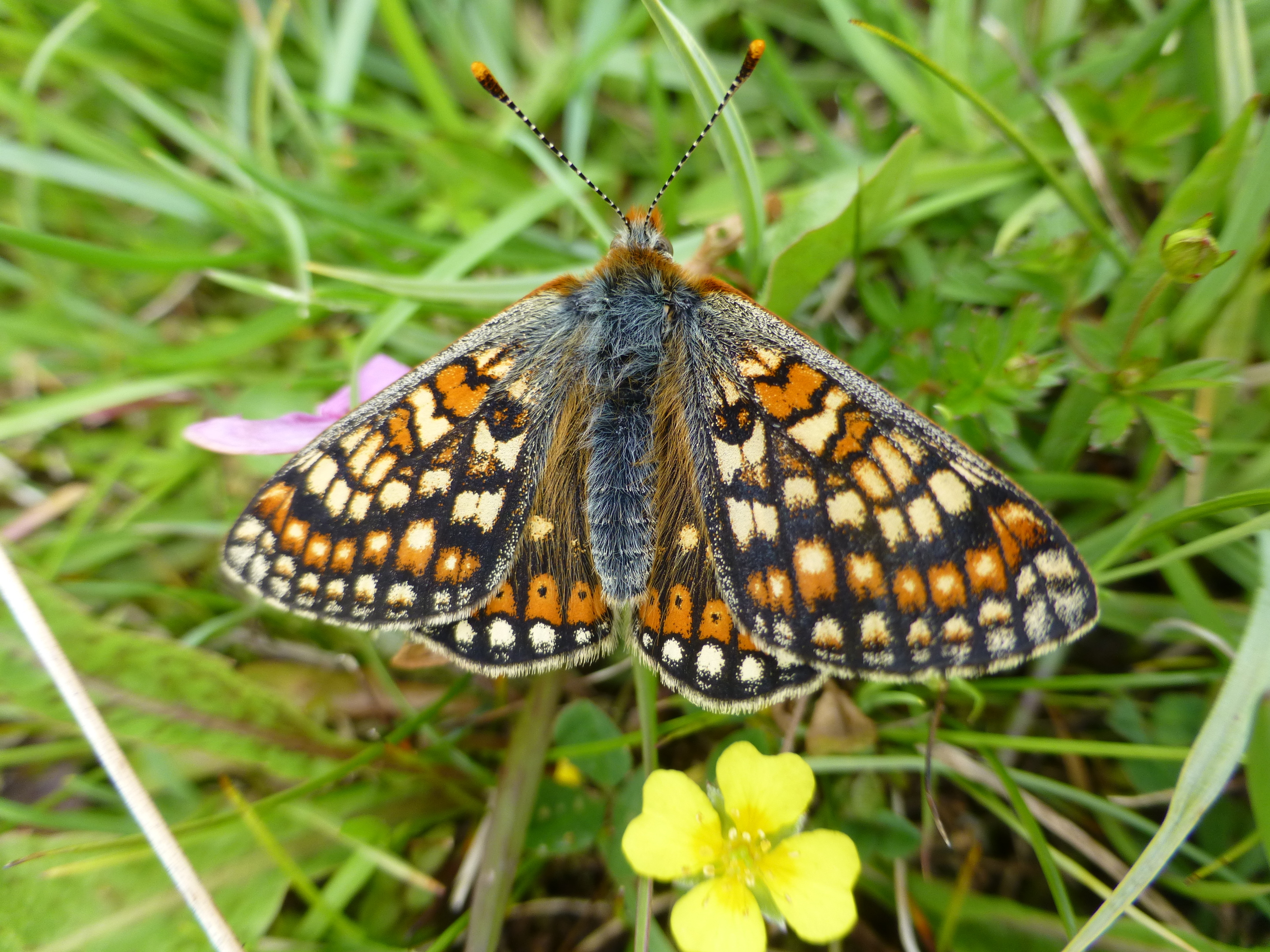Thousands of rare butterflies are set to emerge on a west coast island in a unique natural spectacle.
An unprecedented number of marsh fritillary caterpillars, one of the UK’s rarest species of butterfly, were spotted this spring at The Oa and Loch Gruinart, the RSPB’s reserves on Islay.
Both sites on the Argyll island have been carefully managed to create a home for the caterpillars and resulting butterflies in recent years.
Marsh fritillary caterpillars spend the summer living communally in self-spun webs before overwintering as a group in a protective silken tent, usually deep in the vegetation. In the spring the caterpillars split up, feeding alone before finding a pupation site to transform into their adult form.
They eat the leaves of only one particular wildflower called devil’s bit scabious, and in Scotland, their population is almost entirely limited to the Inner Hebrides and coastal Argyll.
The population boom occurring on Islay this year is part of a natural seven-year cycle that involves the butterflies, their food plant and a parasitic wasp. This year numbers favour the butterflies but next year an abundance of parasite wasps could lead to a population crash.
RSPB Scotland’s Jack Fleming, said: “Marsh fritillaries are stunning little insects, and Islay’s one of the most important sites for them in the country, so if you want to see them, you really need to come here.
“They’ve declined severely in the last century right across Europe, and we’ve been managing both our reserves on Islay, and on Oronsay, to encourage them. It’s extremely unusual to get quite so many caterpillars all at the same time, and already the butterflies are starting to appear.
“With luck, visitors will be able to see upwards of 50 at once on patches of wild thyme and other wild plants. The hope is that these will then disperse and spread the population over a wider area, which is great news for the species.”
Meanwhile RSPB Scotland staff have reported the first record of the butterfly on Tiree since 1950. At least 50 adult marsh fritillaries were counted in an hour during a survey on the island last week. The butterflies are a European Protected Species and have limited range in the UK, entirely on the west coast. It is estimated to have declined by 73% between 1995 and 2004, and recently became locally extinct in the Netherlands.
